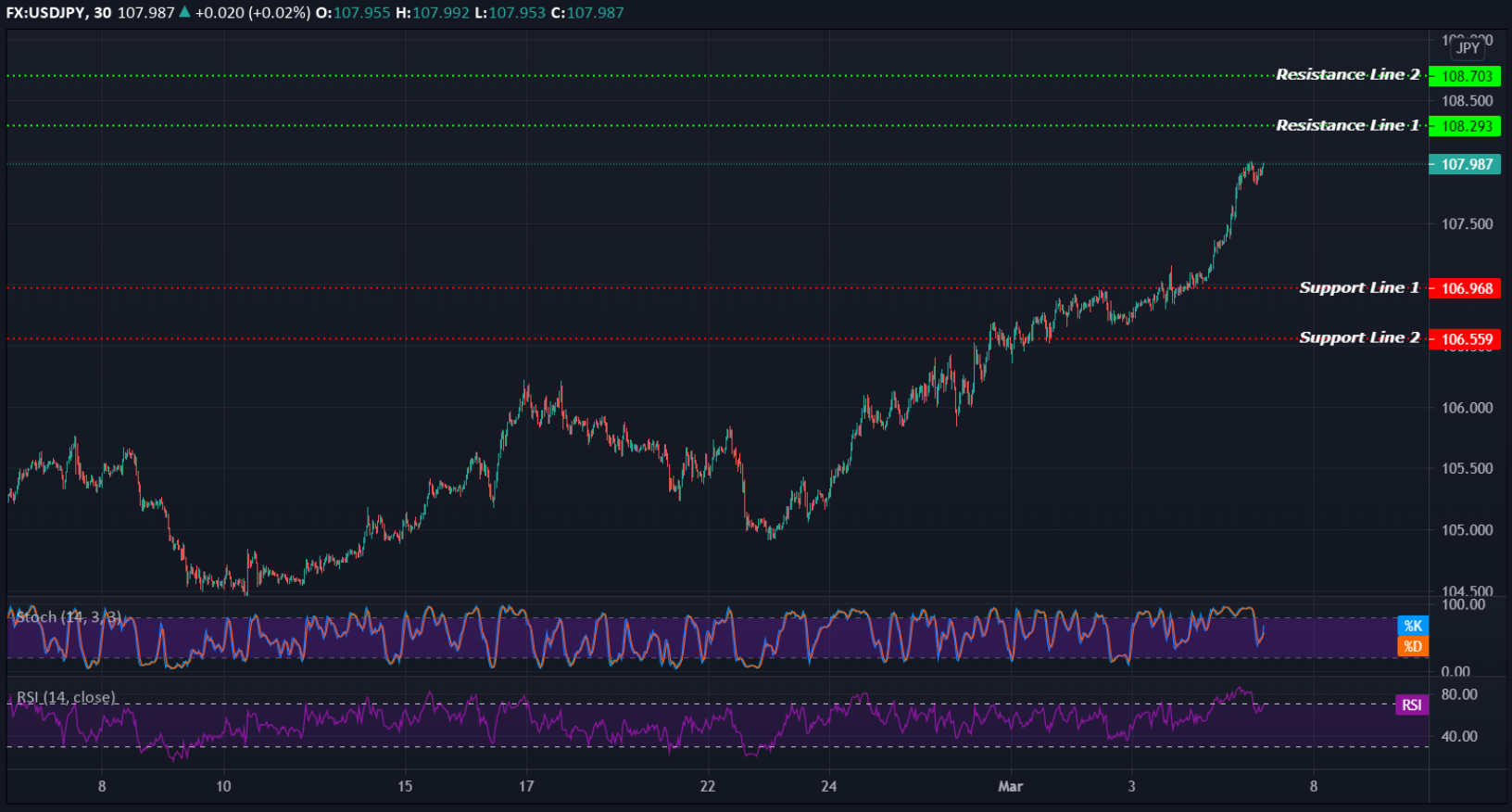EQUITIES
Asia-Pacific markets were lower on Friday. In Japan, the Nikkei 225 led losses among the region’s major market, declined -1.97%, followed by the Hong Kong’s Hang Seng index at -0.90%, and the Shanghai composite at -0.87%. The South Korea’s KOSPI slipped -0.87%, the Australia’s S&P/ASX 200 shed -0.91%, and the India’s S&P BSE Sensex index down at -0.65%. Meanwhile, the Singapore’s Straits Times index at -0.20% lower.
Overnight, the Nasdaq Composite fell 2.11% to 12,723.47, to turn negative for 2021. The S&P 500 closed 1.34% lower at 3,768.47 while the Dow Jones Industrial Average declined 345.95 points to finish its trading day at 30,924.14.
OIL
Oil prices rose on Friday, adding to overnight big gains. The Brent crude futures traded to $67.37 per barrel, while the U.S. crude futures at $64.40 per barrel.
The global crude oil prices settled more than 4% overnight, with the Brent closed at $66.74, while WTI futures ended at $63.83 per barrel.
CURRENCIES
The dollar jumped to a 3-month high as the rising U.S. Treasury yields again rattled equity investors. The U.S. dollar index, which tracks the greenback against a basket of its peers, was at 91.63.
Riskier currencies including the Australian and New Zealand dollars slid along with stocks as investor sentiment again turned sour.
GOLD
A combination of climbing yields and dollar battered gold prices, which sank to a 9-month low, to trade below $1,700 for the first time since June 2020.
Gold spot slumped, to trade at $1,694.50 an ounce, while slipped around $1,691.70 per ounce for gold futures. Previously closed at $1,696.90 and $1,700.70, respectively.
ECONOMIC OUTLOOK
Shares in Asia-Pacific declined in Friday trade as investors keeping eyes on bond yields as well as technology stocks in the region.
Technology stocks once again watched for the day after the Nasdaq Composite fell more than 2% overnight on Wall Street and turned negative on the year.
On his speech before a virtual Wall Street Journal Jobs Summit, U.S. Federal Reserve Chair Jerome Powell said Thursday that the economic reopening could “create some upward pressure on prices”, expecting the central bank to be “patient” in terms of acting on policy, even if the economy sees “transitory increases in inflation.”
Bond yields rose again following Powell’s comments. The benchmark 10-year U.S. Treasury yield climbed above 1.5%, but still below a 1-year high of 1.614% struck last week.
OPEC and its allies agreed to keep production unchanged into April as demand recovery from the coronavirus pandemic was still fragile (with exemptions to Russia and Kazakhstan). Oil prices surging more than 4% overnight to highest in over a year.
Chinese Premier Li Keqiang on Friday set a modest 2021 economic growth target, at above 6%.
To date, number of confirmed worldwide cases for COVID-19 pandemic has surpassed 115.597 million, recording more than 2.569 million fatality globally.
TECHNICAL OUTLOOK
[USDJPY]
Important Levels to Watch for Today:
- Resistance line of 108.293 and 108.703.
- Support line of 106.968 and 106.559.
Commentary/ Reason:
The dollar touched its highest since July 1, 2020 at the cusp of 108 earlier today, though it pared those gains and was last trades steady at 107.957 yen.
The safe-haven dollar has been supported both by the higher Treasury yields and the upswing in risk aversion the bond rout has generated.
The 8-month trough of the yen remained under pressure as Bank of Japan Governor Haruhiko Kuroda on Friday stressed the need to keep long-term borrowing costs stably low to underpin an economy hit.
The BOJ caps the 10-year bond yield around zero under a policy dubbed yield curve control (YCC), and currently allows the benchmark yield to move 40 points around its 0% target.















